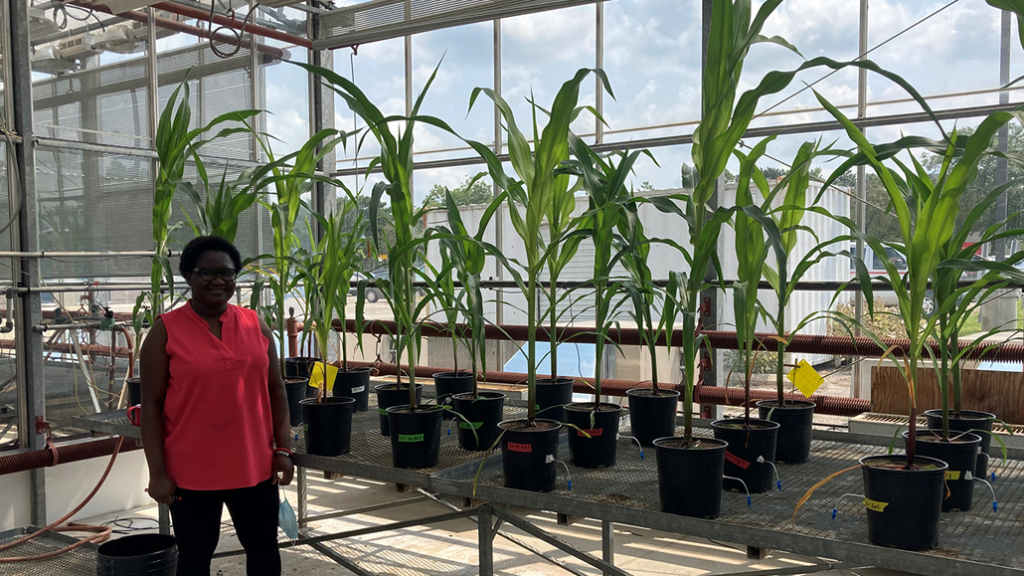Soil health and phosphorus efficiency
MANAGEMENT OF ORGANIC AMENDMENTS

ORGANIC AMENDMENTS, SUCH as manure, are a double-edged sword for grain farmers.
They obviously boost crop performance through providing both plant-available nutrients and adding organic matter to the soil.
“However, these amendments can be a serious environmental concern when improperly managed, especially with regard to phosphorus (P),” explains Dr. Paul Voroney, professor at the University of Guelph, School of Environmental Sciences. “Runoff from farmland with significant amounts of P continues to receive attention due to the critical impact this nutrient can have on water quality.”
Organic amendments, which typically contain high concentrations of calcium and P in addition to organic matter (OM), affect soil P chemistry by altering both the amounts and distribution of the various forms of P. But much more needs to be learned about just how they govern the chemistry of P in soil.
In 2019, Voroney began more research in this area, with colleagues Dr. James Longstaffe at University of Guelph, Dr. Tiequan Zhang at Agriculture and Agri-food Canada, and Dr. Yuki Audette, a special graduate faculty at the University of Guelph. The research is being conducted by PhD candidates Busayo Kodaolu and Ibrahim Mohammed. The project will finish in 2024.
ONTARIO SCENARIO
Most soils in southern Ontario are calcareous (rich in calcium carbonates). The fate of inorganic P (applied in fertilizer) is very much controlled by chemical reactions with calcium carbonates, iron, and aluminium oxides. A variety of calcium-phosphate (Ca-P) compounds are formed, and the majority of these are what is called ‘stable’ and not available to plants. Overall, of the fertilizer applied each year, only 15 to 20 per cent of the P is taken up by plants. The remainder accumulates and is converted into stable forms and adsorbed to soil particles which can be lost in erosion runoff outside the growing season.
The good news is that in greenhouse studies, Voroney and his colleagues have found that uptake of P applied in fertilizer can be increased by more than 50 per cent when applied with an organic amendment.
“Given a cost of P fertilizer of ~$800/metric tonne and typical application rates of 50 kg per hectare, adding amendments has the potential to save farmers up to $50/ha on their P fertilizer bill,” says Voroney. “In addition, through adding organic amendments, they will receive the additional benefits of the organic matter to soil physical, chemical, and biological properties.”
That is, the organic matter (OM) in manure, when it interacts with the calcareous Ontario soils, has been shown to favour the formation of available forms of P over the stable, unavailable forms. Voroney and his colleagues want to determine just how much OM is capable in binding with nutrients such as P and how much it can prevent plant-available P from being transformed into stable forms.
A CLOSER LOOK
In terms of how OM in soil binds with nutrients, we must understand it contains many functional groups in its molecular structures which give it a high degree of biological and chemical reactivity. In soil, its negative charge attracts cations (atoms with a positive charge) that strongly influences the mobility and bioavailability of nutrients. Meanwhile, OM has both negatively and positively charged surfaces depending on its molecular structure and the soil’s pH. In calcareous soils, OM has more negatively-charged surfaces and therefore it tends to bind with soil mineral cations, especially calcium.
Furthermore, the hydrophilic (water-loving) surfaces in soil OM, especially the humic acid component, inhibit the growth of mineral crystalline structures thereby inhibiting transformations of labile Ca-Ps to stable/unavailable Ca-Ps. (Humic colloids are formed in soils when the residues of plants and microorganisms decompose, and they provide a range of benefits to both soil and plants.)
“Therefore, if we apply organic amendments that promote formation of humic colloids to calcareous soils, we may enhance availability of not only cationic nutrients, but also plant-available P,” says Voroney. “But we have to remember that the capability of humic compounds to attract and bind with cations varies depending on the source of the organic amendment. An understanding of the characteristics of humic compounds is necessary for best management of organic amendments. And even though organic amendments like composted manure generally contain large amounts of humic colloids, their role in inorganic P chemistry has not been well studied.”
Mohammed’s thesis research will produce comprehensive information on the macromolecular composition of typical organic amendment inputs, such as swine manure, swine manure compost, turkey litter compost, biosolids and source-separated organic compost, to soils.
Audette’s research has already demonstrated the effect of turkey litter compost on corn and soybean growth and soil P chemistry, compared to inorganic P fertilizers in a greenhouse setting.
TESTING A SOIL TEST
In addition, the team is looking into the results provided by Ontario’s current soil P test in soils that are amended with organic amendments.
“The current official soil P test in Ontario is the Olsen P test,” Voroney explains. “In soils treated with organic amendments, farmers have reported that this soil P test underestimates the plant-available P. This is problematic because results that indicate lower levels of P in the soil result in P fertilizer recommendation that are higher than what’s needed. This obviously results in higher costs for farmers and increased erosion run-off risk as well.”
A greenhouse study also backs up the tentative conclusion that the Olsen soil P test may not be accurate in soils amended with organic amendments. In a greenhouse study conducted by Audette, the test indicated that compost-treated soil was much lower in plant-available P compared to soil that had had inorganic fertilizer applied to it. However, plant performance was better in the compost-treated soil, indicating that those plants had more P than their peers in soil that received fertilizer. The team is evaluating other P tests that provide a better measure of available P from organic amendments.
LOOKING FORWARD
From her work so far, Kodaolu can conclude not all organic fertilizer (manure) is equal. Their ability in soil to promote plant growth varies. Some can help build up soil OM and soil health, while some can supply enough P for optimum crop health. Some can do both. She believes it will be important to link these organic fertilizers and response in soil to type of livestock animal, age, diet and type of manure management.
“We are excited,” says Voroney, “that this research will provide critical scientifically-based information for establishing effective P management strategies for grain growers in Ontario. This will lead to reduced fertilizer costs, improved soil health and reduced risks to water quality as well.”
This project was funded in part by the government of Ontario.
We acknowledge the support of the Natural Sciences and Engineering Research Council of Canada (NSERC). •











